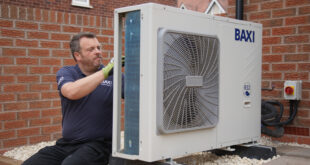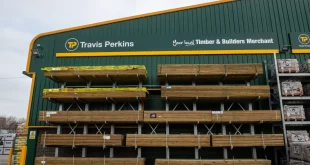In 2015, the value of the UK shower equipment market is expected to have increased by around 4% compared to 2014, reflecting steady growth in the building and home improvement markets.
Between 2010 and 2012, the market for showering products was relatively volatile, but since 2013 there has been a notable increase, with demand picking up as the housing market recovers and consumer confidence levels improve.
The majority of UK households now have at least one shower installation in their property, the number climbing since the 1990’s to 89% in 2014, equivalent to 23.8 million UK homes.
The growing popularity of showers has been driven by a number of factors such as smaller average household size, smaller average property size, and a rising proportion of houses, flats, and apartments that have small bathrooms.
In addition, the trend towards multi-generational living has positively impacted on demand for accessible solutions that make bathrooms more functional.
Other factors include rising disposable incomes and lifestyle changes, product development focused on quality, and design with a trend towards higher value products and contemporary styles.
At the luxury end, these products include large rainfall shower heads, steam hydro-massage shower cabins, digital shower controls, and minimalist wet room areas.
Sustainability and water efficiency has also become a major concern with UK householders, and as a result, water saving shower equipment is in greater demand.
Shower controls account for the greatest proportion of the overall shower equipment market, though enclosures, screens, and trays account for only moderately less than the shower controls sector.
As a result of the maturing shower market and high level of shower usage, replacement products such as shower accessories have grown share to 13%. Many products are now designed specifically for retrofit purposes with ease of installation an important consideration.
Shower products for the domestic and commercial sectors are distributed through a wide range of channels. The main distribution channel continues to be builders and plumbers merchants, with the DIY multiples also holding a substantial share.
Other retail channels include bathroom specialists, grocery multiples, mail order retailers, and department stores.
Online retailers are also important as consumers use the internet to source the best deals. Manufacturers are also selling spare parts and accessories direct to the consumer online.
Hayley Thornley, AMA research manager, said: “There has been a continued growth in the popularity of showering over the last decade, and showers have become an essential fixture in the modern home.
“While showers are now installed as standard in most new build homes, as the market matures it is the replacement market that is likely to hold the most potential for growth. An increasing number of shower products are now designed specifically for retrofit purposes”
The outlook for the UK shower equipment market in 2015 looks positive with growth of 3-5% per annum anticipated into the medium-longer term.
However, pricing pressures are likely to remain intense due to rising levels of imported products and an increasingly competitive distribution market.
Future trends include the growth in wetrooms and walk-in shower areas, the increasing popularity of digital showers and forecast growing demand for ‘inclusive’ shower products due to the ageing UK population.
Other trends include the growth of water efficient shower controls driven by the introduction of the Water Label on shower products from 2014.
 Builders Merchants Journal – BMJ Publishing to Builders Merchants and the UK merchanting industry for more than 95 years
Builders Merchants Journal – BMJ Publishing to Builders Merchants and the UK merchanting industry for more than 95 years



